Disaster Management
Class 10-Science & Technology Part-2-Chapter-10- Maharashtra Board
Solution
Question 1:
Complete the table.
(Motor accident, land sliding, forest fire, theft, riot, war, epidemic, drought, locust attack, financial crisis, flood, famine)
| Disaster | Symptoms | Effects | Remedy |
Dispensaries and hospitals are suddenly crowded due to particular disease Safety of food and water to be enhanced.
Disaster
Symptoms
Effects
Remedy
Motor accident
Traffic Jams, Ambulance rushing towards the spot.
Injury, Loss of life, Damage of car.
First disperse the crowd. Give first aid to injured person and then rushed to hospital for immediate medical help.
Land sliding
New cracks or bulges in the ground, street, mountains. The gravity and severity of the landslide depends upon location of the landslide.
Loss of property, loss of life, adverse impact on environment. The traffic will also halt if the landslide is near the major roads.
The authority should be informed. Give help to clear debris, call ambulance to send victims to the hospitals as soon as possible.
Forest fire
Lightning, human activities involving. The huge flames and fire can be seen near forests areas. The birds and the animals run helter skelter to save their lives.
Impact on environment, loss of lives of animals. Everything turns into ashes.
Call fire brigade to extinguish the fires and spreading. Give first aid to animals which survived the burns. If anyone is injured, he/she should be given medical help.
Theft
The latch or the lock is broken. The valuables from the home or shop are missing. Everything in the house is strewn here and there.
Financial losses. Severe mental and emotional shock.
Police should be called immediately to nab the criminals. Giving emotional support to victim.
Riot
The cities, towns or villages show sign of tense atmosphere. People gather in groups and discuss something secretively.
Loss of life. Property is looted. Ladies and children suffer the most as they are easily victimized.
Give shelter to innocent victims, provide food and clothing and first-aid to the victims. We can establish mohalla committees for peaceful behaviour with each other. The wise members from each community can be summoned.
War
Transgressing, opinion differences between countries. Tense conditions in the areas of both the countries situated near the border. Both the countries, try to instigate each other.
Loss of life and property, Impact on the country and its economy
Give shelter to innocent victims, provide food, clothing and first-aid to the victims
Epidemic
Spreading of viruses from different animals
Many people infected via contact. Some of them die due to further complications. Great demand for medicines in the pharmacy shops.
Give proper medication to people, preparing antidotes against epidemic. Mass immunization programmes to be undertaken.
Drought
No rainfall for long duration. There is scarcity of water Members of the family bring water from the far-off water bodies. Tankers are seen supplying the water.
Food and water crisis, loss of life. It is a time of dry famine. The crops are unable to grow to the fullest. Cattle suffer due to lack of water and grass.
Donate food and water for victims, provide shelter and monetary help. Water management to be done. Various methods of water conservation to be undertaken by drought-prone villages.
Locust attack
The locusts are seen hovering over the crops. Leaf distortion, chlorosis. The standing crop is seen to be attacked.
Crop destruction, scarcity in food.
Spraying pesticides
Financial crisis
The financial security of the nation is seen dwindling. Heavy downfall in share market index. Bankrupt, fall in value of money
Impact on the country and its economy, impact on individual. Poverty rises, buying power of people is reduced. Business activities are seen to be suspended.
Giving support to friends and family. The employment opportunities should be increased. People should be helped to set up the business.
Flood
Cloudburst, heavy rainfall The water level of canals, river's etc. is seen to be rising.
Health risks, loss of property, food and water crisis, loss of life. The entire region is waterlogged.
Donate food and clothing for flood victims, People and animals have to be shifted from the water-logged region to the safer places at the heights. After the flood water recedes the care has to be taken for controlling epidemics’ of communicable diseases.
Famine
The water from the reservoirs and canals also recede. The crops do not grow. The cracks on the land and farms can be seen clearly.
Food and water crisis, displacement of people, loss of life. People and cattle are starved. The prices of the food gains and other items, go on rising.
Donate food and water for victims, provide shelter and monetary help. In the drought-prone regions, care is to be taken for water conservation before it rains. Select the crops that are resistant to such dry conditions,
Question 2:
Write notes. Disaster Management Authority is the body that works at the level of government. From national level to village level, the work of District Disaster Management Authority is carried out. Following flow chart indicates the function of control and coordination under the disaster management from national to village level. This work is basically about management of any disaster and tackling the problems of the affected people.
1. Disaster management Authority

2. Nature of disaster management.
Disaster management involves either prevention of disasters or creating preparedness to face them. Disaster management works in two modes, viz. pre-disaster management and post-disaster management. The disasters are tackled in the following steps : Preparation, redemption, preparedness, action during actual disaster, response, resurgence and restoration. Pre-disaster Management: Post-disaster Management: At every level there are other voluntary organizations and Government meteorological institutions for their help in disaster management.
This is done after studying the different aspects such as preventive measures, rehabilitation and reconstruction plans. All these plans are executed during management of disaster.
Post-disaster management is concerned with the situation that arise after a disaster has occurred. It includes the following components:
3. Mock drill
Mock drills are a way of checking the preparedness of facing a disaster. During mock drills, an apparent situation is created to check the reaction time and the type of response. Therefore, mock drill is useful.
Mock drills are carried out in schools, offices, public places, etc. for situations like fire accidents, terrorist attack, etc.
4. Disaster Management Act, 2005
Government of India has made Disaster Management Act in 2005. The Disaster Management Act, 2005 was passed by the Rajya Sabha on 28 November, and by the Lok Sabha on 12 December 2005. The act extends to the whole of India. This act called for the formation of National Disaster Management Authority (NDMA) with prime minister of India as its chair person.
Question 3:
Answer the following questions.
1. Explain the role of district disaster control unit after occurrence of any disaster.
(1) District control unit looks after the disaster management of the district. (2) It is immediately formed either after the impact of disaster or if warning is given about some upcoming disaster. District-wise Disaster Control Unit performs following role :
2. Give the reasons for increase in human disasters after the World War-II.
(1) After Second World War, the feelings of peace and brotherhood among the global citizens were lost. The geographic, religious, racial and ethnic differences sprang up tremendously. (2) After World War-II, there has been a vast advancement in technology. This has led to tremendous increase in human disasters. (3) Atrocities that Nazi has performed made deep impact on the minds of people. Terrorism, abduction, robberies and social unrest increased in almost all the countries. (4) The financial losses had incurred in the World War II. The misuse of science and technology was done to retrieve these deficits. (5) At the end of World War II, the atomic bombs were dropped in Japan. This has created health problems in the entire world. (6) Later, the neighbouring nations kept on fighting. The geographical boundaries were changed. People always had feelings of insecurity. The terrorism flourished. All such instances gave rise to man-made disasters.
3. Which are the objectives of disaster management?
The objectives of disaster management are as follows:
4. Why is it essential to get the training of first aid?
If we know about techniques of first aid, we can save life of injured person. Therefore, it is essential to get the training of the first aid.
5. Which different methods are used for transportation of patients? Why?
In emergency condition, different methods are used for transportation of patients. Following are the various methods used for transporting patients:
Question 4:
On the basis of the structure of disaster management authority, form the same for your school.
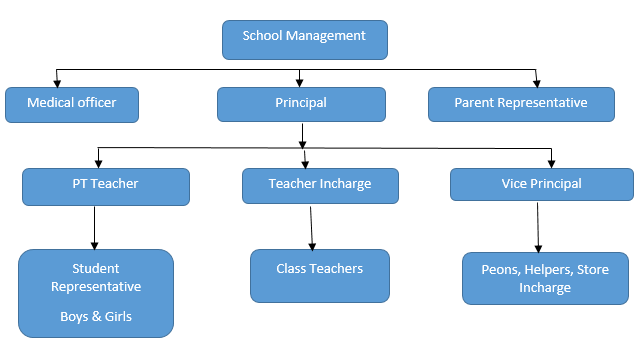
Question 5:
Write down the Reasons, effects and remedial measures taken for any two disasters experienced by you.
Two disasters experienced are: (ii) Theft: **Note: The disaster experienced can vary from person to person. Students are expected to write their experience.
(i) Motor accident:
Question 6:
Which different aspects of disaster management would you check for your school? Why?
Following are the main aspects of pre-disaster management at school: (2) Are telephones of the school working properly? (2) Is there a first-aid box in each class? (3) Are there basic medicines available in the school? (4) Are the certified fire extinguisher available and kept at proper place? (5) Is the disaster management team ready for rescue of smaller children from lower classes? (6) Has mock drill conducting & monitoring properly? (7) Does Representative of students & other team members know about first aid? (8) Is the contact of parent representative available in emergency situations? (9) Is the Medical Officer/Doctor present on the school campus? (10) Is there enough drinking water and some dry snacks available in the school? (11) Are the design of school building suitable for quick evacuation of the children?
(1) Are the Help line numbers list displayed at proper place?
Question 7:
Identify the type of disaster.
i. Terrorism
Man-made, intentional Due to the activities of terrorism, many innocent lives are lost. Many are seriously injured. Some become crippled for their entire life.
ii. Soil erosion
Man-made as well as Natural, geophysical, geological. The fertility of the area is lost. The land becomes unsuitable for cultivation or farming. Due to wind, flowing water or grazing animals the naturally occurring soil erosion becomes hazardous for the environment.
iii. Hepatitis
Natural, biological, animal-origin. Hepatitis is a viral disease which spreads through the contaminated food and water. The outburst of epidemic of hepatitis is difficult to control. People suffer due to hepatitis.
iv. Forest fire
Natural, biological, plant-origin. Many trees and other vegetation, animals and birds along with their habitats is destroyed due to forest fire. The smoke emanating causes the air pollution.
v. Famine
Natural, climatic. Due to famine there is severe water scarcity. There is shortage of food grains. The cattle dies due to want of water and grass. Local people have to migrate in search of food, water and shelter.
vi. Theft
Man-made, intentional. Theft causes personal financial loss. The person who suffers the loss also undergo mental and emotional shock, sometimes the thief may also cause physical harm and loss of life.
Question 8:
Some symbols are given below. Explain those symbols. Which disasters may occur if those symbols are ignored?
These symbols come under globally harmonized system (GHS) adopted by UN for labelling and classification of substances. The above signs are warning symbols which should never be ignored. (i) Irritant: This symbol is used for hazardous products which causes less severe health effects. When skin or any delicate part of the body comes in contact with the irritant substance, it can cause harmful reaction. Especially, eyes, nasal, mucosa und skin are affected by contact with corrosive substances. If this symbol is ignored, then health issues as mentioned above can arise as well as can impact the environment. (ii) Toxic: This symbol indicates that the product has acute oral, dermal and inhalation toxicity. To taste a toxic substance or even to smell it can lead to death. The packing of these substances are therefore marked as dangerous, They should be avoided as far as possible. (iii) Environmentally hazardous : This symbol is used to represent that the product is hazardous to environment. Air, water or soil can be polluted due to such pollutants. When environment is affected, ultimately these hazardous effects come back to human species. Therefore, such substances should be carefully used, Their use should be judicious and controlled. (iv) Health hazard: This symbol indicates that the product can cause serious health effects. Materials marked with health hazard can cause severe toxicity. The product with this symbol should not be kept in proximity. As far as possible they should be kept away and handled with great care if needed for any work, Materials marked with health hazard can cause severe toxicity. (v) Corrosive: This symbol is used to indicate that the product is capable of corroding metals and cause irritation to eyes and skin. The corrosive substances are very sensitive, The mere touch of corrosive substances can cause destruction of skin, eyes, respiratory passages, digestive organs, etc. with a great speed. Thus warning sign’ of corrosive substance should never be ignored. (vi) Oxidizing : This symbol represents that the product is good oxidising liquids or solids. They carry out chemical reactions with a rapid speed.The product having this symbol can cause fire or explosions or can even intensify fire. Therefore oxidizing substances should be handled with care. (vii) Inflammable : This symbol represents flammable gases, aerosols, liquids and solids; pyrophoric liquids, gases and solids, self-reactive substance or mixtures, organic peroxides. The product having this symbol can cause fire on heating. Therefore, to warn people such sign is given on materials that can cause hazard by burning. (viii) Explosive: (viii) This symbol represents that the product is an unstable explosive or it is a self-reactive substance or mixtures. This symbol is also placed on labels of organic peroxides. We should not take anything that would cause fire leading to explosion. If explosion occurs, there would be a major disaster causing great loss of life and property. Thus if this sign is seen, great care has to be taken. (ix) Compressed : This symbol is used to represent compressed substances are filled under pressure in some container.. The product having this symbol may explode on heating as well as may cause cryogenic burns and injuries. If mishandled, they can come out of the container by bursting it open.



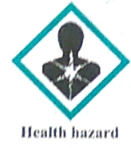
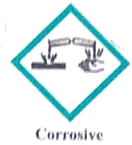
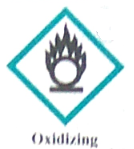

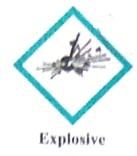

Question 9:
Explain that why is it said like that? Mock drill is the practice to check whether there is preparedness for dealing with the disaster if suddenly it attacks. For this purpose virtual or apparent situations that simulate the disaster are created. The reaction time for any type of disaster is checked by such activity. In the presence of trained personnel, the execution of the rescue plans are observed. These drills should be conducted at every work places, schools, public places etc. By such mock drills, the efficacy of the system can be understood. In future, when actual calamity strikes, there is already preparation for disaster redressal. Therefore, mock drill is useful.
(1) Mock drill is useful
(2) Effective disaster management makes us well prepared for future.
We know that disasters are sudden and unplanned and thus can't be avoided in most cases. But if effective disaster management is employed and exercised, then we would certainly achieve the abilities to face the adverse effects of disasters. Hence, through effective disaster management, we can definitely reduce the harsh effects of the disaster by following disaster management plan.
Question 10:
Complete the following chart.
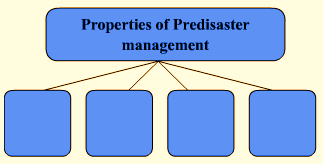
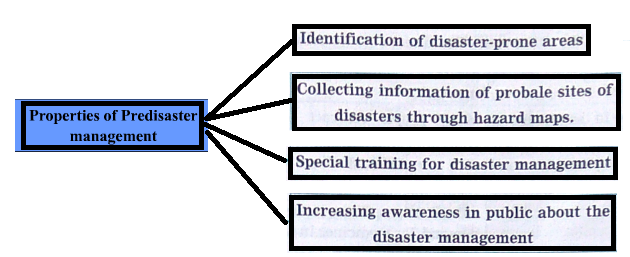
Question 11:
Following are the pictures of some disasters. How will be your pre- and post-disaster management in case you face any of those disasters?

(a) Pre-disaster management: Post-disaster management: (b) Pre-disaster management: Post-disaster management: (c) Pre-disaster management: Post-disaster management: (d) Pre-disaster management: Post-disaster management:
Click on below link to get PDF from store
MSBSHSE-Class 10-Science & Technology-2-Chapter-10-Disaster Management-Notes
MSBSHSE-Class 10-Science & Technology-2-Chapter-10-Disaster Management-Solutions
MSBSHSE-Class 10-Science & Technology-2-Chapter-10-Disaster Management-Books
Useful links :
| Main Page : - Maharashtra Board Class 10 Science & Technology Part-1,Part-2 - All chapters notes, solutions, videos, test, pdf.
Previous Chapter : Chapter-9-Social Health - Online Solution |